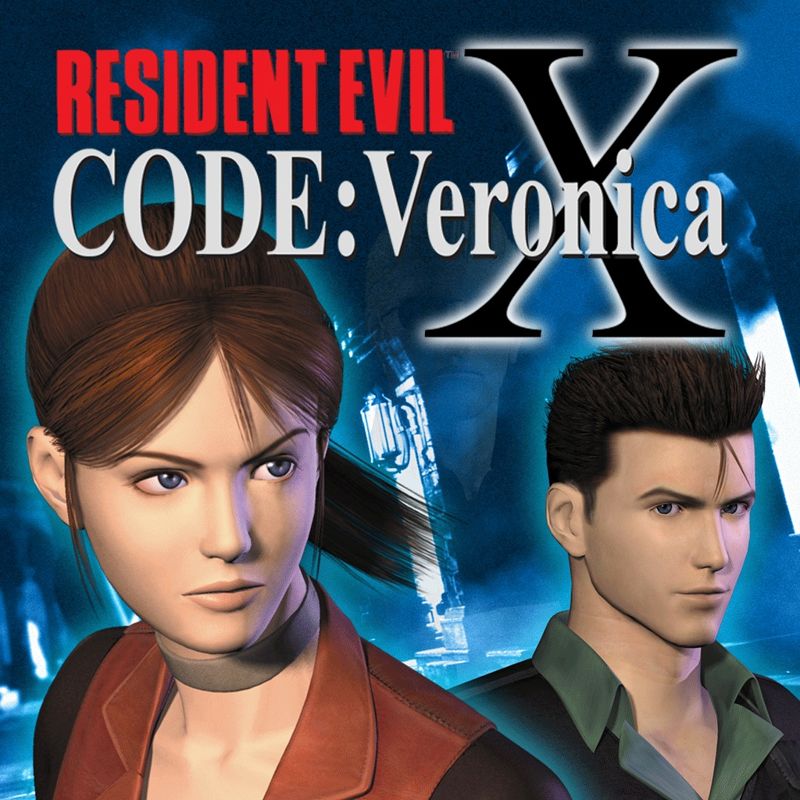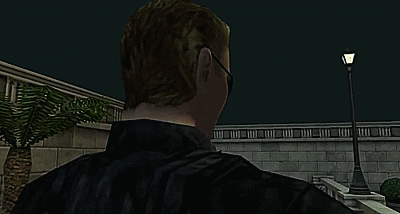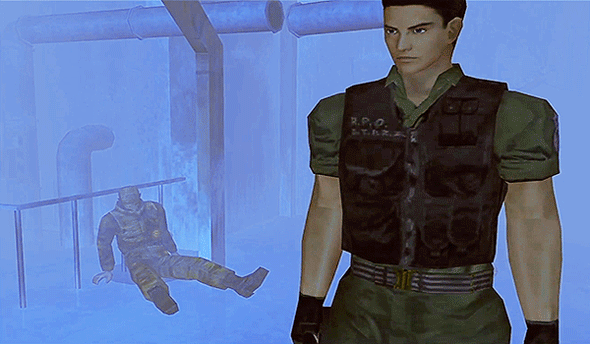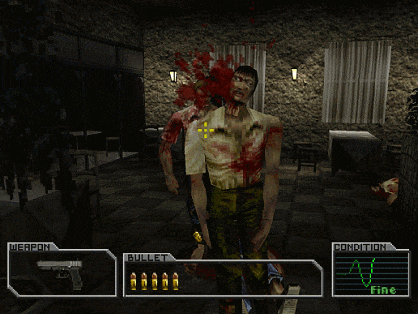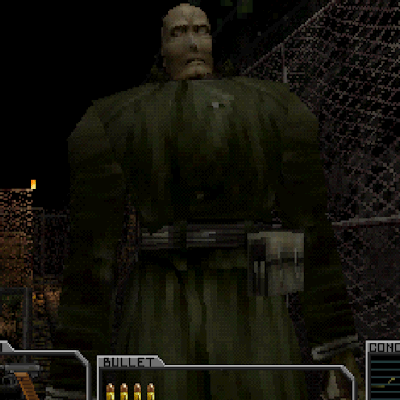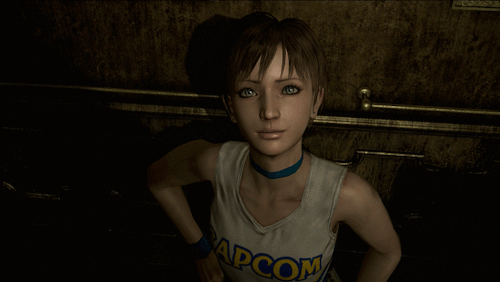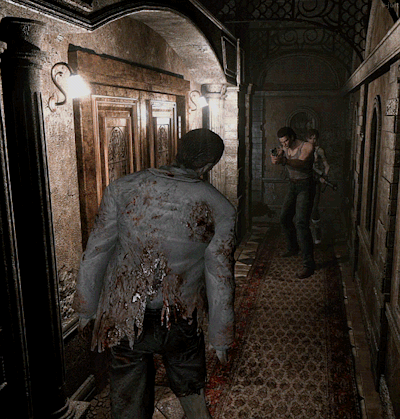Resident Evil - Code: Veronica
(BioHazard - Code: Veronica)
Original Console: SEGA DreamCast
Original Release Date: February 3, 2000
Developer: Capcom
Plot: Three months have passed since the US Government's destruction of Raccoon City, a Midwestern town home to a headquarters of Umbrella Inc. Claire Redfield, a survivor of the catastrophe, has been searching for her brother since then. Raiding an Umbrella facility in Paris, Claire is captured and taken to Umbrella's private prison island in the Southern Ocean: Rockfort Island.
Some time following her imprisonment, she is released by a severely wounded guard, Rodrigo Raval. Leaving her cell, Claire comes to discover that Rockfort Island has suffered an outbreak from the T-Virus, the same virus responsible for Raccoon City's destruction. Escaping recently undead zombies, Claire comes across a fellow prisoner, Steve Burnside. Together, they must work alongside one another to escape the island before they too fall victim to the horde of monsters.
9/10
Gameplay: Resident Evil - Code: Veronica is the fourth main-line game in the series and is fondly remembered as one of the more cinematic and best looking games for the time; having been originally released on the SEGA DreamCast, the game was faster, better looking, and with the better hardware, was capable of doing much more than it's predecessors. Unfortunately,
Code: Veronica fell just short of expectations after
Resident Evil 2 and
3 were masterclasses of gameplay. While improved in several departments,
Code: Veronica is, for all intents and purposes, "one step forwards, two steps back."
Starting off, the 180 degree turn returns to
Code: Veronica after it's introduction in
Resident Evil 3: NEMESIS. From here on out, it's a standard feature in all future mainline
Resident Evil games, which is great as it allows for some quick thinking and tactical maneuvering around enemies. It's arguably something the
Resident Evil games needed in order to further the series, as well as the addition of auto-aim for the North American crowds.
A niche addition to
Resident Evil - Code: Veronica is that of the dual-wielding pistols. I think it's a neat experiment here as Claire can wield two pistols at the same time for double the damage on enemies. Even better, if faced with two enemies from differing directions, Claire will auto-aim so both pistols face the respective enemies, allowing you to shoot down two zombies at once. I appreciate that this game was willing to experiment with new ideas and I for one love this idea and wish more
Resident Evil games had adopted it. Alas, this would be the only game where you could dual-wield weapons.
I think my favorite thing about this game for me is the return of
Resident Evil 1 antagonist Albert Wesker in all his shady glory. This time around he's a super-powered inhuman villain. However, it's a shame that he kinda takes a backseat to two other villains, and doesn't do anything particularly antagonistic to Claire and co. He's more an obstacle and a tertiary party causing trouble for everyone involved. The main villain is in fact the selfish and psychotic Alfred Ashford, owner of the Rockfort Island prison facility and head of the Umbrella Antarctic Research Facility. In Code: Veronica X (an updated version of the Dreamcast game), Wesker gets more screentime explaining his backstory, which makes it more reasonable to search for a copy of that game, as its additions, while minor, add to the story.
There is also the addition of a Battle Mode like with the two games previous. You can choose your character, and additionally the perspective you wish to see from (
Resident Evil's first experiment with first-person shooting). It's a great addition to the game but doesn't exactly set the bar in comparison to The Mercenaries from
Resident Evil 3. It's something of a bonus for those who finished the game and wish to continue the
Code: Veronica experience.
With all the good things though, there are some bad to come along with it. For one thing, there's not much of a variety of enemies as compared to
Resident Evil 2 &
3 (a comparison I think is arguably unfair, but it deserves mention). You have your zombies, your dogs, and your giant spiders, but of the regular enemy additions, you have zombie bats (this game's equivalent to crows), the one strech-armed Bandersnatches, and two very strange enemy types: albinoids and ants. Albinoids are essentially electric salamanders, and ants are... ants. Personally, I don't think they are very interesting and they just feel tacked on for the sake of enemy types, instead of like with
3 where they seemed like logical mutants and aberrations that would occur with a viral outbreak.
Another negative for this game would, in my opinion, be the length and constant backtracking this game suffers from. It's one of the longer classic Resident Evil games, which isn't a bad thing, necessarily. The problem though is that it's artificially longer thanks very much in part to the lack of shortcuts from segment to segment. Instead of a situation like in
REmake where solving a certain puzzle unlocks a shortcut back to the central hub, or
Resident Evil 2, with many ways to traverse about the police station from the central hall,
Code: Veronica has no way to cut backtracking time in half. There are some puzzles that require you to go from one segment to the end of another segment, and all the way back in the exact same path.
Not to mention there's very much a sense of clear linearity to item use and puzzle design compared to
Resident Evil 1. The previous games gave you choices for what to do in whatever order you wanted to. Code: Veronica puts that to bed by restricting you to very much one path of doing it. It's this design choice that leaves me slightly disappointed in Shinji Mikami and co. as they were obviously starting to shy away from the element of "choice" even beginning with
Resident Evil 3.
3 still gave you choices in what to solve in what order in certain sections, however,
and it had the element of replayability with many different cutscenes to quench your thirst for options.
Code: Veronica leaves you with one major "option" and the most it does is allow for better weaponry for later in the game, and that's just sad. I was very much expecting more from Capcom, but they dropped the ball on this one.
I think the biggest problem with
Resident Evil - Code: Veronica, if we're being honest, is the difficulty. It's the hardest classic
Resident Evil game of the series and a lot of it has to do with the toughness and amount of enemies, as well as absurdity of the puzzles. Those dual wield pistols I talked about earlier? They don't have any ammo to replenish with. You are stuck with what you have, so it becomes a more strategic thought process on when you want to use up your precious dual wield guns. Then there's the boss difficulty. It's hard enough having to deal with incredibly tough bosses, but there are certain points in the game where you can be locked out from stocking up on ammunition for the fight, leading to having to actually restart the game despite your save. Then there's the locations of the boss fights; if you are pushed by an enemy far enough, you can actually fall to your death, which is a legitimate gripe I have with the game. You have to sacrifice space from a boss (the one thing that kept you safe in previous games) just so you aren't killed instantly by being knocked back. I hate it, absolutely hate it.
As I said earlier,
Resident Evil - Code: Veronica is a case of "one step forward, two steps back". While there are neat ideas here, they failed to live up to the expectations set by previous games and failed to truly move the bar as each game previous had. That said, I wouldn't call this a failure at all. It's still classic
Resident Evil action in all it's glory. Battle Mode is a welcome addition, and I still had fun with it at the end of the day.
7/10
Visuals: When coming from the PlayStation to the Dreamcast, I was excited to see the upgrade in visual fidelity from the previous games. The Dreamcast was a vastly superior system to the PlayStation, and could handle software at a more manageable rate; this allowed for
Code: Veronica to really strut it's stuff, and for 2000, these are absolutely stunning visuals for the time. Gone are the days of pre-rendered backgrounds too; every setting is produced in real-time 3D resolution. Unfortunately, it would not be until the
Resident Evil: Outbreak series, that we would come to a return of this form. It's still one of the best looking
Resident Evil games in the early days of the series, and with
X ported to many newer systems, looks even better today. 10/10
Audio: Sadly, even with the increase in visual fidelity, Capcom failed in one of the biggest departments for
Code: Veronica, and that was the audio. The voice acting took a step back in regards to Steve and Alfred's voice actors. Claire, Chris, and Wesker all put in very serviceable performances but the insanity and camp of the former party took away from the experience of a serious horror thriller. They aren't
Resident Evil 1 level bad or hilarious, they are just sub-par. The music was also a bit of a let down. Gone were the memorable and ambient filled pieces of the first three games. What we received was an orchestral menagerie of very few memorable songs interspersed with many forgettable pieces. The save theme was naturally outstanding, as with all games in the series, but after that, it becomes hard to remember any song that really stuck out to me.
6/10
TL/DR Summary: Resident Evil - Code: Veronica is a perfectly fine Resident Evil game, even a top 10 game in the series. However, they are several problems that keep it from being the masterpiece it should have been. It's unfortunate that after two incredible games in the series, that Code: Veronica would be the one to fail to impress as much as people said it would. It's a fan favorite for a lot of reasons, and I can totally see where they're coming from. I just don't agree with their arguments. For me, it's a fun
Resident Evil game, but nowhere near as good as it's two predecessors.
Final Grade: 8/10





















